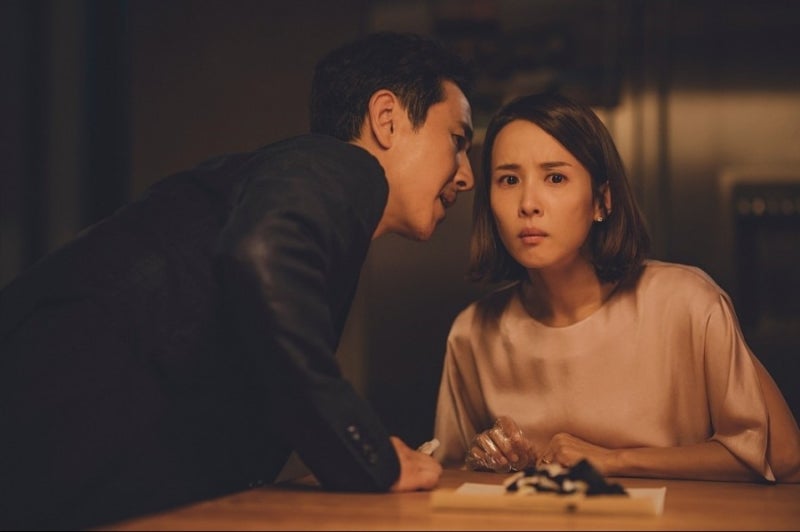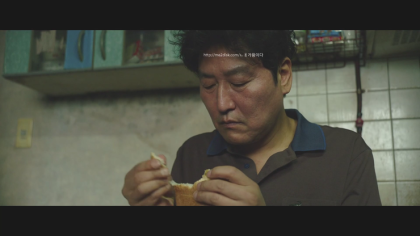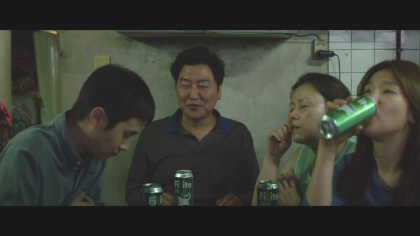기생충 엑기스
기생충 엑기스는 최근 큰 인기를 끌고 있는 한국의 영화 ‘기생충’에서 나오는 용어입니다. 이 용어는 영화에서 등장하는 구체적인 기술적 장치나 기술적인 기법을 가리키는 것이 아니라 영화 전반적으로 사용되는 특정한 스토리텔링의 한 요소입니다.
이러한 엑기스는 사실적인 상황 재현과 일상생활에서의 디테일 등 촬영기법과 그래픽과 같은 다양한 영화 제작 기술을 통해 연출됩니다. 따라서 영화 ‘기생충’의 대표적인 엑기스는 영화 전체적으로 등장하는 특정한 구도의 화면, 풍부한 음향, 그리고 배우들의 연기력 등이 연출될 때 그 힘을 배가시키는 차원에서 사용됩니다.
그러나 기생충 엑기스는 영화 제작에 한정되지 않습니다. 기술, 예술 등 다양한 분야에서도 사용될 수 있습니다. 이를테면 시각디자인 분야에서 일상생활에서의 익숙한 요소를 적극 활용해 작품을 만드는 것, IT 분야에서는 단순함과 편의성을 고려한 디자인 등 많은 분야에서 사용될 수 있습니다.
기생충 엑기스의 의미
기생충 엑기스는 영화 ‘기생충’에서 등장하는 핵심 요소 중 하나입니다. 이러한 엑기스는 사실적인 상황 재현과 일상생활에서의 디테일 등 촬영기법과 그래픽과 같은 다양한 영화 제작 기술을 통해 연출됩니다. 이러한 기술들은 시청자들이 영화가 제시하는 상황에 몰입할 수 있는 화면을 만드는 데 있어서 매우 큰 역할을 합니다.
따라서 영화 ‘기생충’에서 등장하는 기생충 엑기스는 영화의 강점 중 하나이며, 이러한 엑기스가 영화를 더욱 생생하게 만드는 데 큰 비중을 차지한다고 평가받고 있습니다.
기생충 엑기스를 하는 이유
영화 ‘기생충’의 감독 봉준호는 이 영화의 중심 주제 중 하나인 ‘재산 격차’에 대해 적극적으로 다루고자 했습니다. 이를 위해 봉준호 감독은 일상생활에서의 상황과 그에 따른 인간 관계에 촛점을 맞추어 영화를 제작했습니다.
이런 과정에서 영화 제작자들은 일상적인 상황들을 자석처럼 끌어들여 그리고 그 상황과 인물의 모습을 자연스럽게 보여주기 위한 기법들을 찾아낼 필요가 있었습니다. 이러한 과정을 거치면서 ‘기생충 엑기스’가 만들어졌습니다.
기생충 엑기스의 요소와 구성
기생충 엑기스는 영화 ‘기생충’에서 등장하는 구체적인 기술적 장치나 기술적인 기법을 가리키는 것이 아니라 영화 전반적으로 사용되는 특정한 스토리텔링의 한 요소입니다. 그러므로 ‘기생충 엑기스’를 살펴보기 위해서는 이 영화 전체를 통틀어 살펴볼 필요가 있습니다.
예를 들어, 영화 ‘기생충’에서 등장하는 강의장, 밥상, 할배네 집에서의 대화, 그리고 화장실 등은 모두 일상생활에서 일어나는 상황들입니다. 그러나 이러한 상황들은 영화 ‘기생충’에서 자연스럽게 연출되어 매우 사실적인 느낌을 주고 있습니다.
이러한 구체적인 기술적인 장치와 기술적인 기법을 사용하면서 생성된 ‘기생충 엑기스’는 영화가 제시하는 한계를 제거하고, 시청자의 상상력을 자극하여 현실 세계와 가상 세상을 완벽하게 융합시킵니다.
기생충 엑기스의 특징과 장단점
기생충 엑기스의 가장 큰 특징은 시청자들이 영화가 제시하는 상황에 몰입할 수 있는 화면을 만들어 낸다는 것입니다. 이러한 모습은 매우 사실적으로 연출되어서, 일상생활에서 일어나는 상황들과 매우 유사한 느낌을 줍니다.
이러한 장점들은 그러나 필수적인 필요성을 가지지는 않습니다. 단점으로는 생생한 화면을 만들어내기 위해 많은 에너지와 인력을 쏟아야 한다는 것입니다. 이로 인해 제작비용이 매우 높아질 수 있으며, 이러한 제작비용은 제일 필요한 부분에 더 큰 비중을 줄 수 없습니다.
또한 ‘기생충 엑기스’의 적용은 이론적으로는 가능하지만 실제로 적용하기에는 매우 복잡한 과정을 거쳐야 하기 때문에, 일상적인 사용이 어려운 점도 단점으로 꼽힙니다.
기생충 엑기스의 적용 분야
기생충 엑기스는 영화와 그래픽 부문 이외에도 다양한 분야에서 활용할 수 있습니다. 예를 들어, 광고, IT, 시각디자인 등에서 활용할 수 있습니다.
광고 분야에서는 소비자들이 일상적인 상황과 가장 적절하게 연관된 상태를 보여주는 것이 중요합니다. 이러한 상황을 잘 나타내면 광고가 소비자들의 뇌리에 잘 박히게 되어 제품을 다시한번 찾게 됩니다.
또한 IT 분야에서도 단순함과 편의성을 고려한 디자인, 그리고 익숙한 방식으로 사용자들이 제품을 사용할 수 있게 하는 것이 매우 중요합니다. 이를테면, 일반적인 스마트폰은 익숙한 버튼을 가진 디자인으로, 일반 사용자들이 쉽게 이용하도록 만들어졌습니다.
시각 디자인 분야에서는 일상에서 많이 볼 수 있는 요소들을 사용함으로써 디자인을 보다 독특하고 매력적인 것으로 만들 수 있습니다. 이러한 활용은 상당히 유용한 방법으로 사용됩니다.
기생충 엑기스와 보안에 대한 이슈
영화 ‘기생충’에서는 시청자들을 생생하게 물들이는 화면들이 등장합니다. 하지만 이러한 기술들을 이용하면 보안 위협과 같은 여러 가지 문제가 생길 수 있습니다. 이러한 방식으로 이용하는 경우에는 개인정보 유출 등의 문제가 발생할 수 있습니다.
영화 ‘기생충’의 등장하는 기술적인 장치나 기술적인 기법들은 그 특수성 때문에 일반적인 방법으로 해결할 수 있는 문제가 아닙니다. 따라서 보안 측면에서도 이러한 엑기스들은 악용될 가능성이 있다는 것을 인식해야 합니다.
FAQs
Q: 기생충 엑기스란 무엇인가?
A: 기생충 엑기스는 한국의 영화 ‘기생충’에서 사용되는 특정한 스토리텔링의 한 요소입니다. 이러한 엑기스는 사실적인 상황 재현과 일상생활에서의 디테일 등 촬영기법과 그래픽과 같은 다양한 영화 제작 기술을 통해 연출됩니다.
Q: 기생충 엑기스의 의미는 무엇인가?
A: 기생충 엑기스는 영화 ‘기생충’에서 나타나는 사실적인 상황 재현과 일상생활에서의 디테일 등 촬영기법과 그래픽과 같은 다양한 영화 제작 기술을 통해 연출되는 특정한 스토리텔링의 요소입니다.
Q: 기생충 엑기스를 하는 이유는 무엇인가?
A: 영화 ‘기생충’의 감독 봉준호는 이 영화의 중심 주제 중 하나인 ‘재산 격차’에 대해 적극적으로 다루고자 했습니다. 이를 위해 봉준호 감독은 일상생활에서의 상황과 그에 따른 인간 관계에 촛점을 맞추어 영화를 제작했습니다. 이러한 엑기스는 이런 과정에서 영화 제작자들이 일상적인 상황들을 자석처럼 끌어들여 그리고 그 상황과 인물의 모습을 자연스럽게 보여주기 위한 기법들을 찾아낼 필요가 있는 과정을 통해 만들어진 것입니다.
Q: 기생충 엑기스의 특징과 장단점은 무엇인가?
A: 기생충 엑기스의 특징은 시청자들이 영화가 제시하는 상황에 몰입할 수 있는 화면을 만든다는 것입니다. 이러한 모습은 매우 사실적으로 연출되어서 일상생활에서 일어나는 상황들과 매우 유사한 느낌을 줍니다. 장점은 시청자들이 영화가 제시하는 상황에 몰입할 수 있는 화면을 만들어낸다는 것입니다. 하지만, 이엑기스는 생생한 화면을 만들어내기 위해 많은 에너지와 인력을 쏟아야 한다는 것입니다.
Q: 기생충 엑기스의 적용 분야는 어디인가?
A: 영화와 그래픽 부문 이외에도 다양한 분야에서 활용할 수 있습니다. 광고, IT, 시각디자인 등에서 활용할 수 있습니다.
Q: 기생충 엑기스와 보안에 대한 이슈는 무엇인가?
A: 영화 ‘기생충’에서는 시청자들을 생생하게 물들이는 화면들이 등장합니다. 하지만 이러한 기술들을 이용하면 보안 위협과 같은 여러 가지 문제가 생길 수 있습니다. 이러한 방식으로 이용하는 경우에는 개인정보 유출 등의 문제가 발생할 수 있습니다.
사용자가 검색한 키워드: 기생충 엑기스 기생충 다시보기, 기생충 소파신 시간, 기생충 시간, 기생충 소파신 다시보기, 기생충 누누, 기생충 좌표, 기생충 소파신 장면, 기생충 시계방향
Categories: Top 28 기생충 엑기스
시계방향/소파신/베드신이 화제였던 영화 기생충 조여정 모음
여기에서 자세히 보기: future-user.com
기생충 다시보기
The movie has been praised for its clever storytelling, combined with fantastic acting, and audacious direction. It’s impossible to talk about 기생충 without mentioning the film’s many accolades, including winning the prestigious Palme d’Or at the 2019 Cannes Film Festival and Oscars for Best Picture, Best Director, Best Original Screenplay, and Best International Feature Film in 2020.
Following its release, 기생충 has amassed a considerable fanbase, with many fans worldwide eagerly anticipating a chance to re-watch it. Fortunately, this has been made possible, as 기생충 다시보기, which translates to “Parasite Re-watch,” offers fans around the world an opportunity to watch the movie again.
기생충 다시보기 is a streaming service that allows users to rent or buy the movie to watch on their preferred device. There are many reasons why fans might choose to re-watch the movie, ranging from its plot, to its message, to its delivery. Here’s what you need to know about 기생충 다시보기:
How to Stream 기생충 다시보기?
Several services offer the movie for rent or purchase, including Apple TV, Google Play, Amazon Prime Video, Vudu, and YouTube. The rental and purchase costs differ between the various streaming platforms.
What Languages is 기생충 다시보기 available in?
The movie can be watched in its original Korean-language version with English subtitles, as well as dubbed versions in Spanish, German, French, Italian, and Portuguese.
What Makes 기생충 다시보기 Worth Watching?
기생충 is, without a doubt, one of the most exciting and thrilling movies of the past few years. The film’s director, Bong Joon-ho, has expertly constructed a movie that manages to be both a thrilling thriller while also offering a social commentary about class inequality.
The movie tells the story of two families from different economic backgrounds, the poor Kims and the wealthy Parks. The Kims end up working for the Parks under false pretenses and begin to infiltrate their lives, leading to unexpected and jaw-dropping events. 기생충 is a movie that doesn’t shy away from the harsh realities of socioeconomic inequality, and many people have found it to be extremely relatable.
In addition to its fantastic storytelling, 기생충 also has a great cast made up of eager and highly talented actors. Lead actors Song Kang-ho, Lee Sun-kyun, Cho Yeo-jeong, Choi Woo-shik, Jang Hye-jin, and Park So-dam all manage to bring their characters to life in a natural and effortless manner.
Finally, the film also offers a very important message that is extremely relevant in today’s world. 기생충 brings to light the harsh reality of the widening wealth gap and the societal struggles that come with it. In particular, the film sheds light on the desperate and often extreme measures lower-class individuals will go to make ends meet, leading to questions of how we as a society can work to fix these issues.
FAQs
Q: Why is 기생충 so popular?
A: 기생충 captures the complexities of life in the modern world, particularly in relation to how socioeconomic inequality affects different classes and their struggles to make ends meet. By interweaving a thrilling plot with social commentary, the film stands out as an extremely relatable and thought-provoking work of art.
Q: Where can I watch 기생충 다시보기?
A: 기생충 다시보기 can be watched on various streaming platforms, including Apple TV, Google Play, Amazon Prime Video, Vudu, and YouTube.
Q: In what languages is 기생충 다시보기 available?
A: 기생충 다시보기 is available in the original Korean-language version, with English subtitles. It is also dubbed in Spanish, German, French, Italian, and Portuguese.
Q: Why did 기생충 win so many awards?
A: 기생충 won many awards because of its thought-provoking and clever storytelling, as well as its masterful direction. The movie does an excellent job of weaving together different themes while still managing to keep viewers engaged and on the edge of their seats.
Q: Is 기생충 suitable for all ages?
A: No, 기생충 is not suitable for all ages. It is rated R for language, violence, and nudity. As such, children under the age of 17 should watch the movie with adult supervision.
In conclusion, 기생충 is a groundbreaking film that expertly weaves together social commentary with a thrilling narrative. 기생충 다시보기 offers fans worldwide an opportunity to re-watch the film, allowing them to appreciate its many layers and subtle nuances once again. The movie is not only an artistic triumph but also serves as a reminder of the social issues that continue to plague our world. With a brilliant cast, excellent direction, and an important message, 기생충 다시보기 is an absolute must-watch for anyone looking for a captivating and impactful film.
기생충 소파신 시간
One of the most iconic scenes from the film is the “sofa scene” or the “누구세요” (Nuguseyo) scene. The scene takes place when the main characters, the Kim family, infiltrate the Park family as employees and slowly start living off their wealth. In the scene, the Kim family hides under the coffee table of the Park family’s living room when the latter abruptly returns home, forcing them to find a hiding spot. The Parks then sit on the sofa, unintentionally trapping the Kims beneath it. The scene is intense, nerve-wracking, and darkly comedic at the same time.
As the Parks settle on the sofa, they start discussing personal matters and revealing their true colors, which the Kims eavesdrop on. The scene highlights the class divide between the two families and how the Kims are inferior to the Parks in every aspect. From the expensive wine to the luxurious house, the Kims are left in awe and envy. The scene’s tension builds up as the Kims struggle to remain hidden under the sofa while the Parks indulge in their privilege.
The “sofa scene” has become an iconic moment in cinematic history, with some people even recreating it in their living rooms and posting it on social media. The scene is a testament to Bong Joon-ho’s masterful storytelling and unique blend of humor and social commentary. It resonated with audiences worldwide and has since become a cultural phenomenon.
The recent re-release of the film in South Korea with the added “black-and-white version” has reignited interest in the “sofa scene,” particularly with the fans’ curiosity on the exact duration of the scene. This has led to the popular term “기생충 소파신 시간” (Parasite sofa scene duration) trending on social media platforms.
According to various sources, the “sofa scene” has a runtime of approximately 11 minutes and 17 seconds. This includes the set-up leading to the scene and the aftermath that follows. The actual scene itself is around six minutes and 25 seconds long. However, the scene’s duration is not the only aspect that makes it memorable but the dynamic between the characters and the underlying themes that it symbolizes.
The “sofa scene” encapsulates the whole film’s dynamics, which is the struggle between the working-class and the wealthy, the haves versus the have-nots, and the illusion versus reality. The Park family epitomizes privilege, whereas the Kim family is the opposite – struggling to make ends meet, living in a cramped apartment, and constantly battling poverty. Throughout the “sofa scene,” the Parks’ privilege is juxtaposed with the Kims’ struggle, highlighting the stark differences between social classes.
The scene also reveals the Parks’ ignorance and naivety, as they discuss their personal issues freely, unaware that the Kims are mere inches away from them. The Kims, on the other hand, desperately cling onto their hidden spot, hoping not to be discovered. Through this scene, Bong Joon-ho comments on how the wealthy remain oblivious to the struggles of the less privileged and how the latter is forced to navigate the world covertly.
The “sofa scene” also highlights the film’s underlying themes of deception and the blurred lines between reality and illusion. The Kim family poses as someone they are not, deceitfully infiltrating the Parks’ house and living off their wealth. The scene’s tension builds up as the Parks start to suspect that someone else is living in their house or that there is something unsavory happening behind closed doors. The tension climaxes when the Parks’ young son Da-song, who has been drawing pictures of Native Americans, peeks under the sofa, and the Kims realize that their cover is blown. It symbolizes how the truth always finds a way to reveal itself, no matter how well disguised it is.
FAQs
Q: What is the “sofa scene” in Parasite?
A: The “sofa scene” is a pivotal scene in the South Korean film Parasite. It takes place when the Kim family, posing as employees in the wealthy Park family’s house, hides under the coffee table of the living room when the Parks abruptly return home. The Parks then sit on the sofa, trapping the Kims under it. The scene highlights the class divide between the two families and the tension that arises from the Kims’ deceitful infiltration of the Park family.
Q: How long is the “sofa scene” in Parasite?
A: The “sofa scene” lasts approximately 11 minutes and 17 seconds, including the set-up leading to the scene and the aftermath that follows. The actual scene itself is around six minutes and 25 seconds long.
Q: Why is the “sofa scene” in Parasite so memorable?
A: The “sofa scene” in Parasite is memorable because it encapsulates the film’s dynamics, which are the struggle between the working-class and the wealthy, the haves versus the have-nots, and the illusion versus reality. It highlights the class divide between the two families and the Kims’ struggles to eke out a living, juxtaposed against the Park family’s privileged lifestyle. The scene also reveals the Parks’ ignorance and naivety, as they discuss their personal issues freely, unaware that the Kims are mere inches away from them. Lastly, the scene’s tension builds up as the Kims struggle to remain hidden under the sofa, hoping not to be discovered.
Q: What themes does the “sofa scene” in Parasite represent?
A: The “sofa scene” in Parasite represents several themes, such as the struggle between the working-class and the wealthy, the haves versus the have-nots, and the illusion versus reality. It also highlights the themes of deception and the blurred lines between reality and illusion. The scene symbolizes how the wealthy remain oblivious to the struggles of the less privileged and how the latter is forced to navigate the world covertly.
Q: Why has the “sofa scene” in Parasite received global attention?
A: The “sofa scene” in Parasite has received global attention because it is a testament to Bong Joon-ho’s masterful storytelling and unique blend of humor and social commentary. It encapsulates the film’s dynamics and highlights the stark differences between social classes. The scene’s tension and the underlying themes that it symbolizes resonated with audiences worldwide, making it a cultural phenomenon.
기생충 시간
The story of 기생충 시간 (Parasite) revolves around the poor Kim family, who live in a cramped basement flat in Seoul. One day, the eldest son, Ki-woo, is offered a job as a tutor for the daughter of the wealthy Park family. He quickly devises a plan to get his entire family employed by the Parks. As the story unfolds, it becomes a commentary on social class, capitalism, and the struggle for survival in a highly competitive society.
The film has been praised for its complexity, subtle humor, and superb acting performances. It has won numerous awards, including four Oscars, for Best Picture, Best Director (Bong Joon-Ho), Best Original Screenplay, and Best International Feature Film. In this article, we will explore the cultural impact of 기생충 시간 and answer some frequently asked questions about the film.
Cultural impact of 기생충 시간
1. The film’s exploration of the class struggle and capitalism
One of the main reasons 기생충 시간 has resonated with audiences worldwide is because it explores the social and economic disparities that exist in modern society. The Kim family represents the lower-class, who struggle to make ends meet, while the Park family represents the elite, who live in luxury and abundance. The film’s metaphorical commentary on capitalism and the wealth gap has struck a chord with audiences around the world. 기생충 시간 has served as a wake-up call to many, prompting them to reflect on their own privilege and the injustices that exist in their own societies.
2. The film’s representation of Korean culture
While the themes of 기생충 시간 may be universal, the film’s representation of Korean culture is what makes it particularly unique. The film showcases the architecture of Seoul, the Korean language, and the country’s obsession with education. The portrayal of Korean culture has helped spread awareness about Korean customs and traditions.
3. Recognition of South Korean cinema
기생충 시간 has been a game-changer for South Korean cinema, putting it in the spotlight like never before. Bong Joon-ho’s win at the Oscars has placed him in an elite group of directors, alongside legends like Martin Scorsese and Steven Spielberg. The film has influenced the way that the world views South Korean cinema, and there has been growing interest in Korean films both inside and outside of the country.
FAQs about 기생충 시간
1. What is the metaphorical meaning of the title, “Parasite”?
The title of the film refers to the metaphorical parasitic relationship between the Kim and Park families. The Kim family live off the wealth of the Parks, just like a parasite lives off of its host. The metaphorical meaning goes beyond the family dynamics in the film, however. The film also sheds light on the parasitic nature of capitalism, which exploits the working class for the benefit of the wealthy elite.
2. What is the significance of the peach smell in the film?
The peach smell in the film is a recurring motif that represents the Park family’s wealth. When the Kims first infiltrate the Park household, they are struck by the distinct smell of peaches, which they have never experienced before. The smell is associated with luxury and wealth, and it is used throughout the film to symbolize the divide between the poor and the rich.
3. What is the meaning behind the ending of the film?
The ending of the film has been the subject of much discussion and interpretation. Some have suggested that the film ends on a hopeful note, with Ki-woo dreaming of a life where he can afford the house that overlooks the Park family’s home. Others have pointed out the irony of the fact that he is still trapped in a capitalist system that will make that dream impossible. Ultimately, the film’s ending is left up to interpretation, and it has sparked much debate among viewers.
4. How has the film impacted Korean cinema?
기생충 시간 has had a significant impact on South Korean cinema, bringing it to the forefront of international attention. The film has opened doors for other Korean filmmakers to gain recognition on the global stage. It has also sparked interest in Korean cinema among audiences worldwide, leading to increased visibility and appreciation of Korean films.
5. What has the reaction been like in South Korea?
기생충 시간 has been a cultural phenomenon in South Korea, where it has broken box office records and received critical acclaim. The film has sparked national pride and has been seen as a representation of South Korea’s growing cultural influence. The film has also brought attention to the social issues that it tackles, sparking debates and discussions about the gap between rich and poor in Korean society.
Conclusion
기생충 시간 is a cinematic masterpiece that has had a significant impact on global audiences and South Korean cinema. It has served as a commentary on social class, capitalism, and the struggle for survival in modern society. The film’s success has opened doors for other South Korean filmmakers while bringing attention to Korean culture and customs. As audiences continue to grapple with the themes and messages of the film, it will continue to spark debates and discussions for years to come.
주제와 관련된 이미지 기생충 엑기스

기생충 엑기스 주제와 관련된 이미지 43개를 찾았습니다.









![인터뷰] 아티스트 봉만대 인터뷰] 아티스트 봉만대](https://i.ytimg.com/vi/WldL0DGXkck/maxresdefault.jpg)
Article link: 기생충 엑기스.
주제에 대해 자세히 알아보기 기생충 엑기스.
- #기생충엑기스 | TikTok
- 조여정 이선균 소파신 노출 기생충 베드신+키스신 – 트게더
- 생기 흡혈자 4권 – Kết quả Tìm kiếm Sách của Google
- 조여정 기생충 소파신 > 영상 – 플레이보드
더보기: future-user.com/wki